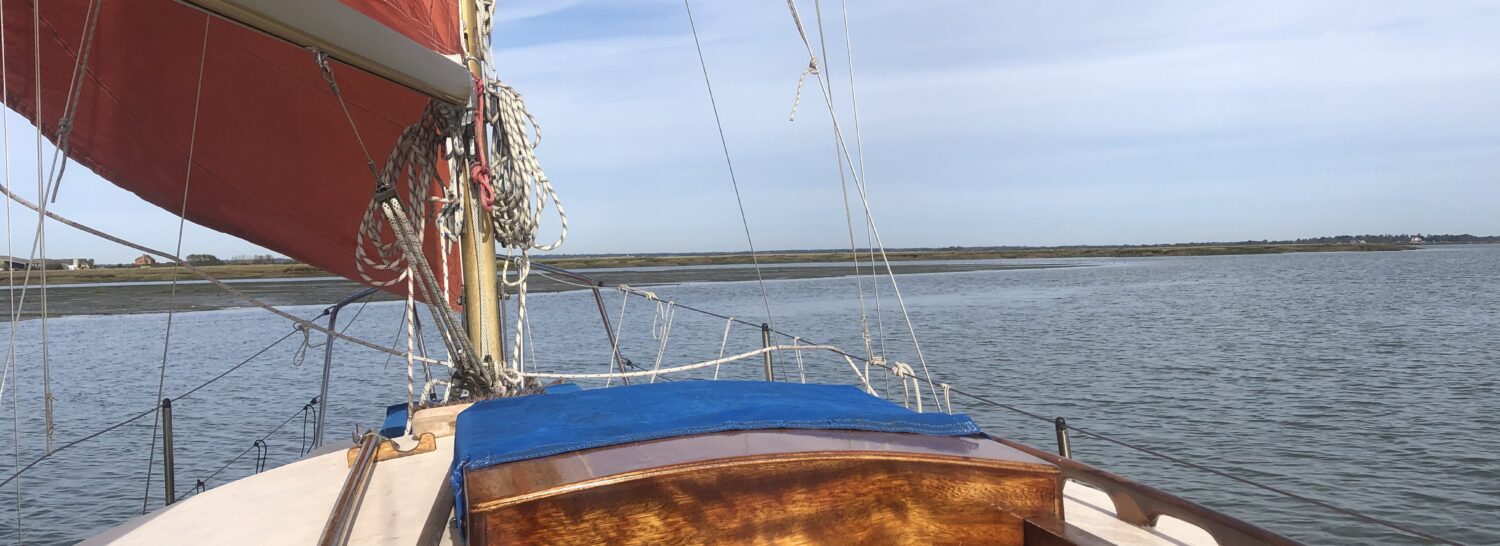Of course, Leigh Ray a pen name and it is widely thought to be the lead author of ‘Swin, Swale & Swatchway’, Herbert Lewis Jones, actually co-written with Charles Barrett Lockwood.
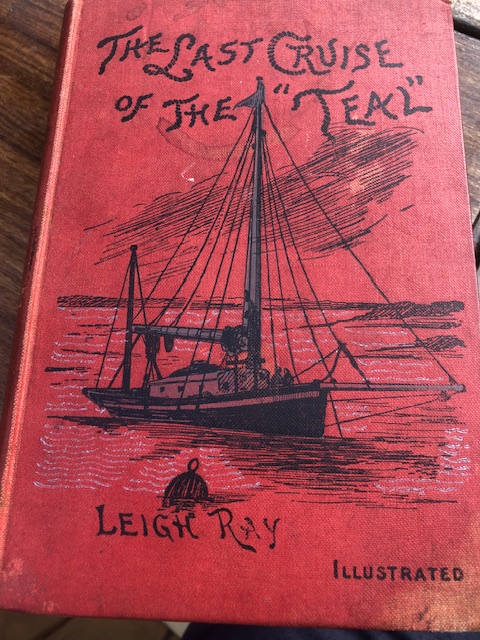
Ray Leigh, as many old sailing hands will know, often wrote articles for early issues of Yachting Monthly magazine.
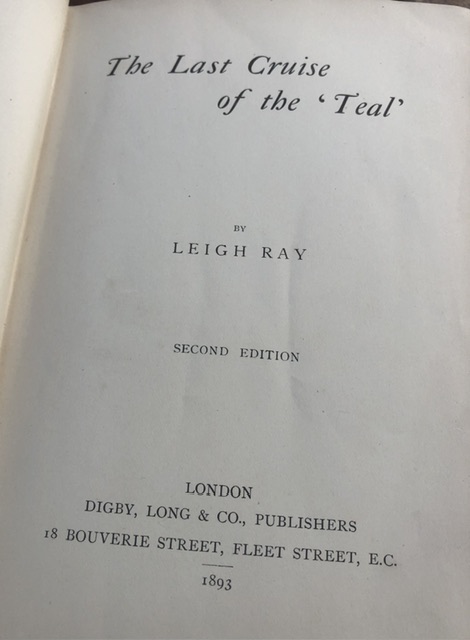
Interestingly if one does a search of the two men, their medical biographies pop up but little else. In Jones’s case, sailing is mentioned as a hobby having been brought u o the banks of the River Medway. Lockwood’s biog n the other hand contains absolutely no mention of sailing… Both were doctors of some repute and died during the early years of the 1st World War.
The book was recommended by a sailing friend and I added it to a list which the mate uses for those yearly special days, and yes, it was in my birthday bag during June!
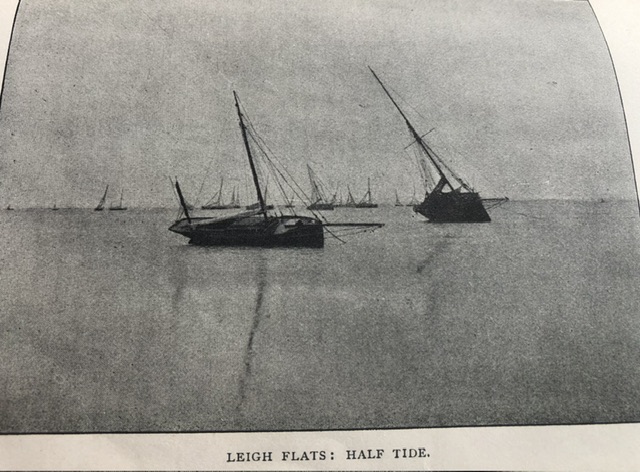
The book begins in a normal enough sort of way. The Teal’s owner gathers together a friend who often sailed aboard and his younger brother. The owner has just completed his finals to become a doctor.
Embarking aboard the Teal they set off on an east coast cruise taking in the River Medway, Havengore, Burnham, The Rays’n to Maldon then up to Harwich.
On the River Medway they cut through ‘marsh islands from ‘Sharpfleet’ Creek to investigate the oyster fishery in Sharpness Creek – now just an inlet.
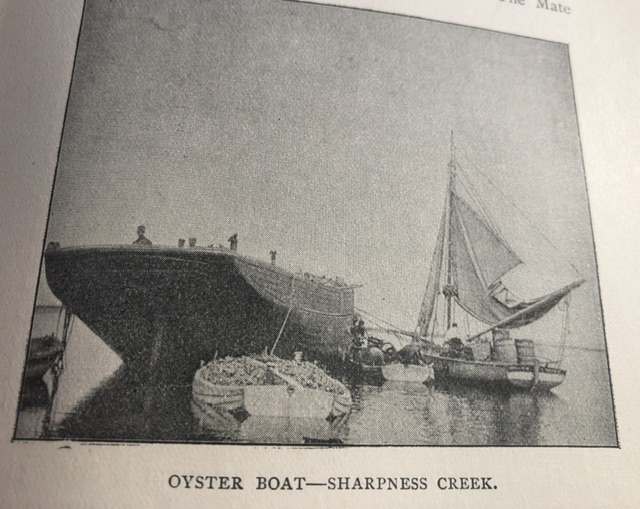
From Harwich, the Teal then sets off, ostensibly to go either to the Deben or the Ore.
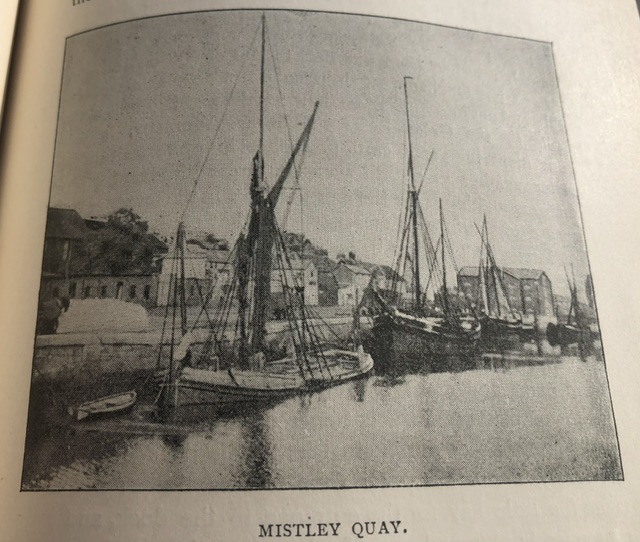
I went back several times to try and find the reason for their’ change of plan, to no avail – I clearly missed something!
The wind gets up and they are well clear of land.
A burning sailng ship is spotted> they sail closer, close enough to see that she is unmanned. Two masts are down and they see the foremast tumble, sails ablaze…
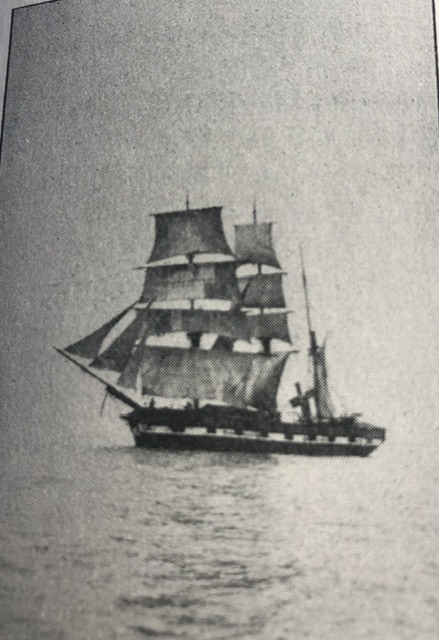
The wind increases. The compass is broken. A full gale rages … an old sail is cut up to make a cockpit well screen and sea anchor. The story has apparently gone past he ‘informative narrative’ to pure hokum…
They are driven before the gale. The skipper was using his watch to get a kind of directional drift – it gets broken…
This goes on for what seems like days. They realise that their drift has not been as expected: they would have been cast p on an east coast shore long before!
Surf is heard. The lead is cast. Nothing. Fifteen fathom. Less. Then less again. Then more, but calmer, until an unseen sheer cliff gives protection.
The anchor is pitched over…
There seems to be around 25% of book exploring the cove they find themselves trapped within. A huge sailing ship wreck dominates one shore. The cove disappears into the cliff, literally, in a stream in a cave.
Making an attempt to get out of the cove, they lose anchors and are swept back, into the cave and find themselves hurtling on the ‘flood tide’ deeper inside the rock. The rock they had already discovered to be salt rock…
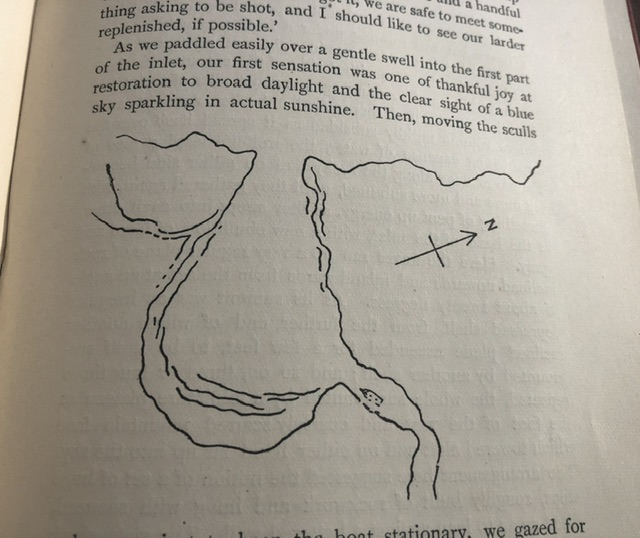
An amazing ‘slalom ride’ ensues, the water turning from salt to ‘fresh’. Masts are cut away … the Teal is all but wrecked and finally they beach. Their dinghy takes them out, eventually, into fresh air.
Finally, the dinghy could float no more. They set off walking living off the land and find a village. The tongue is alien to all three educated young men.
I’ve had enough …
From the village they are sent by various means of transport to Trieste and a ship home!!!
Now, anyone with a modicum of geography knows that for them to have ‘come ashore’ with Trieste as a port of releases must wonder how they got into the Baltic: that is what I perceive.I finished the book, but blimey, it was gung ho ‘boys own’ stuff.
There are some superb black and white illustrations in the first half, but after ‘the ship’ there are none. The story line says there weren’t anymore for equipment was damaged. A batch of plates were boxed and sent ashore at Harwich, apparently…
Did I enjoy it?
Well, yes. It wasn’t as expected and would make a good read for most people…
Thank you for the recommendation, John, and to my mate for its ‘expensive’ purchase…
